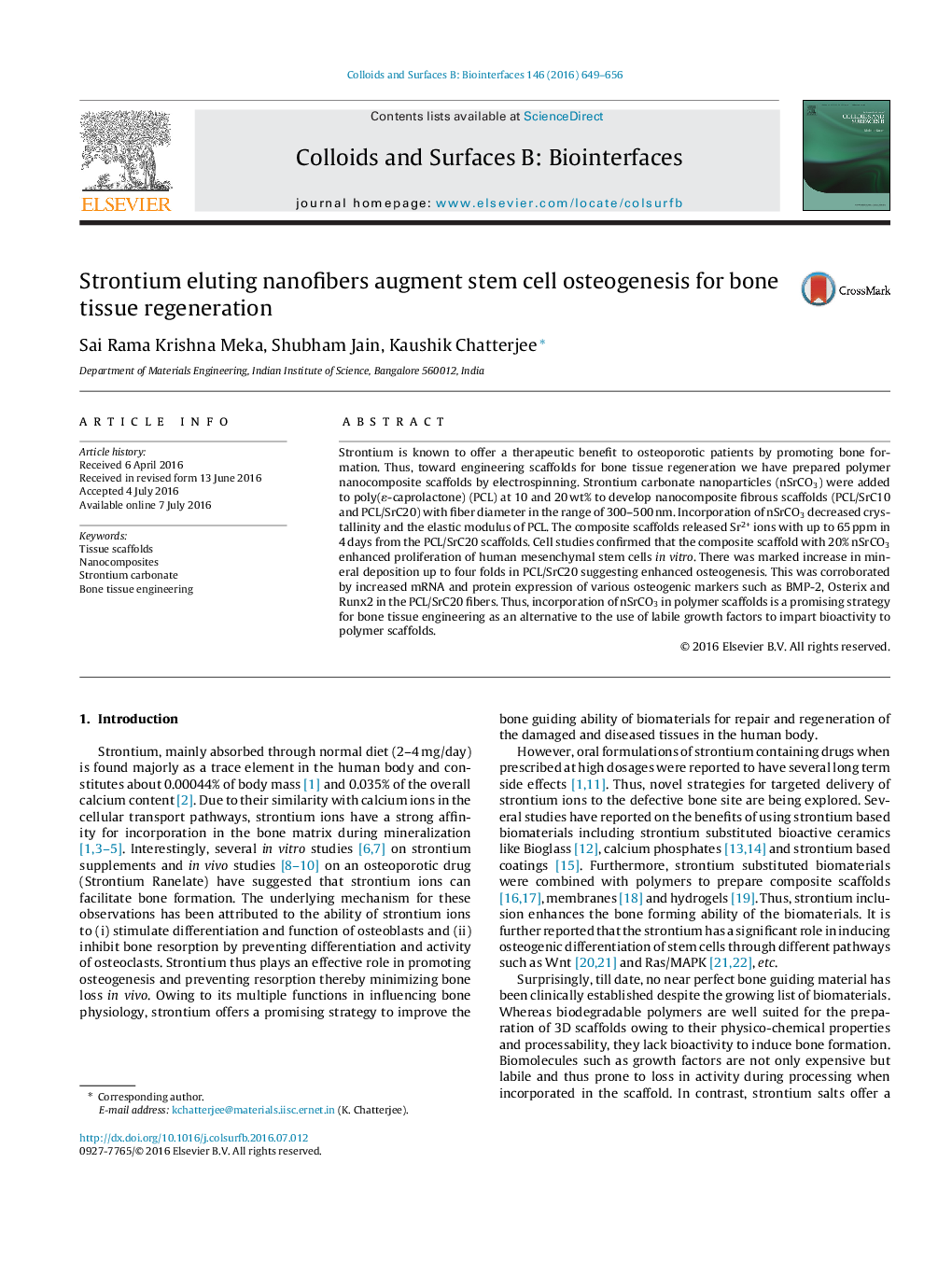| Article ID | Journal | Published Year | Pages | File Type |
|---|---|---|---|---|
| 598794 | Colloids and Surfaces B: Biointerfaces | 2016 | 8 Pages |
•Poly(ε-caprolactone) (PCL) composite nanofibers prepared by electrospinning.•Strontium carbonate nanoparticles incorporated in PCL nanofibers.•Nanocomposite nanofibers released Sr2+ ions in aqueous medium.•Sr2+ ions enhanced osteogenesis of human mesenchymal stem cells.
Strontium is known to offer a therapeutic benefit to osteoporotic patients by promoting bone formation. Thus, toward engineering scaffolds for bone tissue regeneration we have prepared polymer nanocomposite scaffolds by electrospinning. Strontium carbonate nanoparticles (nSrCO3) were added to poly(ε-caprolactone) (PCL) at 10 and 20 wt% to develop nanocomposite fibrous scaffolds (PCL/SrC10 and PCL/SrC20) with fiber diameter in the range of 300–500 nm. Incorporation of nSrCO3 decreased crystallinity and the elastic modulus of PCL. The composite scaffolds released Sr2+ ions with up to 65 ppm in 4 days from the PCL/SrC20 scaffolds. Cell studies confirmed that the composite scaffold with 20% nSrCO3 enhanced proliferation of human mesenchymal stem cells in vitro. There was marked increase in mineral deposition up to four folds in PCL/SrC20 suggesting enhanced osteogenesis. This was corroborated by increased mRNA and protein expression of various osteogenic markers such as BMP-2, Osterix and Runx2 in the PCL/SrC20 fibers. Thus, incorporation of nSrCO3 in polymer scaffolds is a promising strategy for bone tissue engineering as an alternative to the use of labile growth factors to impart bioactivity to polymer scaffolds.
Graphical abstractRelease of strontium ions from polymer nanofibers promoted stem cell osteogenesis.Figure optionsDownload full-size imageDownload as PowerPoint slide
